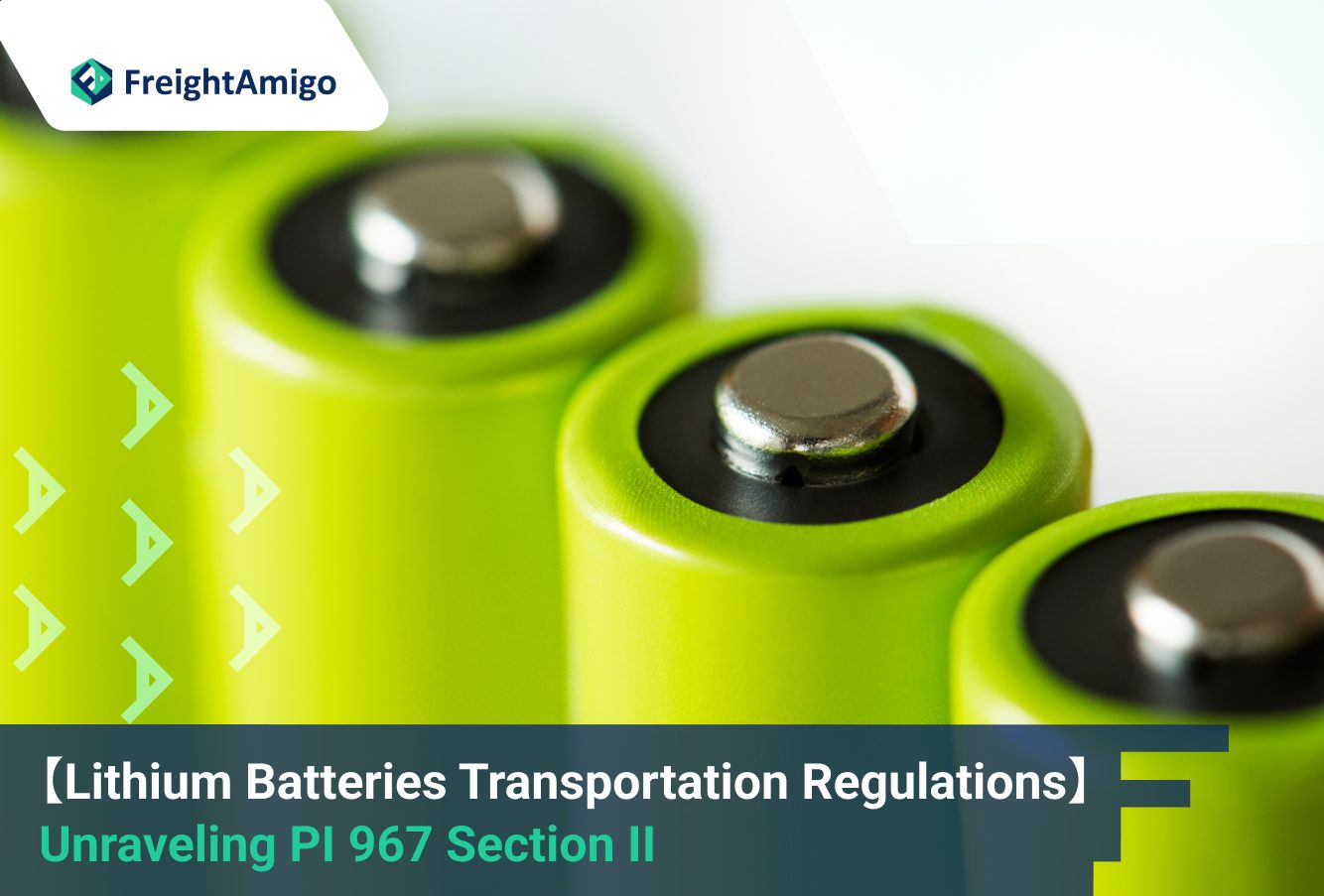Author Name: Tiffany Lee – Marketing Analyst at FreightAmigo
In the contemporary world, lithium batteries have infiltrated every facet of our lives. From powering mobile phones and laptops to children’s toys and e-bikes, their usage is ubiquitous. However, what many people are oblivious to is the fact that these seemingly innocuous power sources are classified as dangerous goods. This necessitates stringent transportation regulations to ensure safety. One pivotal regulation in this context is the PI967 section II, which outlines specific guidelines for lithium-ion and lithium-metal batteries’ transportation. This article delves into the intricacies of this regulation and its implications in the transportation sector.
Want To Compare The Best Express, Air Freight, Sea Freight, Rail Freight & Trucking Rates So As To Have Better Control On Cost?
Understanding Lithium Batteries
Before we delve into the transportation regulations, it’s crucial to understand the nature of lithium batteries. There are two broad classifications of lithium batteries: lithium metal batteries and lithium-ion batteries.
Lithium Metal Batteries
Lithium metal batteries are typically non-rechargeable, containing metallic lithium. They find application in various devices such as watches, calculators, cameras, and defibrillators among others.
Lithium-ion Batteries
Lithium-ion batteries, on the other hand, are rechargeable and contain lithium in an ionic form in the electrolyte. They power devices such as mobile phones, laptops, tablets, power tools, and e-bikes.
The Importance of PI967 Section II
The PI967 section II is a part of the IATA Dangerous Goods Regulations (DGR). It provides specific guidelines for the transportation of lithium-ion batteries packed with equipment or contained in equipment, thereby playing a pivotal role in ensuring safety during transportation.
Regulations for Lithium-ion Batteries
According to the PI967 section II regulations, lithium-ion batteries should be transported at a state of charge not exceeding 30% of their rated capacity. Additionally, the packaging should be robust enough to prevent any damage to the terminals or short-circuiting.
Packaging Requirements
The packaging should be such that it prevents the battery terminals from coming in contact with other batteries, metal surfaces, or conductive materials. The batteries should be packed in a strong, rigid outer packaging, unless the equipment in which they are contained provides equivalent protection.
Labeling Regulations
In addition to packaging, labeling is another crucial aspect of lithium-ion battery transportation. The lithium battery mark is required as per the additional requirements of PI967 section II. The mark is a rectangle or a square with minimum dimensions of 100 mm x 100 mm. It should contain the UN number of the batteries, which should be at least 12 mm high.
Regulations for Lithium Metal Batteries
Similar to lithium-ion batteries, lithium metal batteries also come with their set of transportation regulations, namely PI970 section II. These batteries are forbidden for transport as cargo on passenger aircraft. Thus, all packages prepared according to PI970 section II must bear a Cargo Aircraft Only label.
Ensuring Compliance with PI967 Section II
Compliance with PI967 section II is crucial for safe and legal transportation of lithium-ion batteries. This not only involves adhering to the packaging and labeling guidelines but also involves the correct documentation.
Documentation Requirements
Documentation is a pivotal part of lithium-ion battery transportation. This includes a test summary in accordance with the UN Manual of Tests and Criteria, providing traceability and accountability to ensure that the battery designs conform to the test requirements.
Training for Compliance
Preparation and training are key to understanding and adhering to the regulations. IATA has developed a training course on ‘Shipping Lithium Batteries by Air’ to aid shippers to comply with the 65th Edition of the IATA Dangerous Goods Regulations (DGR).
The Future of Lithium Battery Transportation Regulations
While the current regulations serve to ensure safety in the transportation of lithium batteries, improvements are constantly being made. For instance, from 1 January 2026, lithium-ion batteries packed with equipment and vehicles powered by lithium-ion batteries will be required to be offered for air transport with the battery at a reduced state of charge.
Conclusion
Understanding and adhering to the regulations outlined in PI967 section II is crucial for the safe and legal transportation of lithium-ion batteries. With lithium batteries becoming increasingly prevalent in our daily lives, these regulations serve to mitigate the risks associated with their transportation. Through proper packaging, labeling, documentation, and training, we can ensure the safe transit of these powerful energy sources.
There Are Different Options For Cargo Transportation. If You Want To Choose The Most Convenient And Suitable Solution, It Is Best To Have The Full Support Of Logistics Experts! If You Are Planning To Ship Goods Overseas, Please Go To The FreightAmigo Page For Inquiries.
===
Read More:
【Cosmetic Product Recycling】 A Guide to Sustainable Reverse Logistics
【Rise of Green Supply Chain】 Pioneering Sustainable Practices in Logistics
【ESG in Logistics】 How ESG Practices Drive Social Responsibility in Logistics
===
If you have any inquiries on logistics/supply chain, feel free to contact FreightAmigo now:
Chat with us online OR
Phone : +852 28121686
WhatsApp: +852 27467829









































